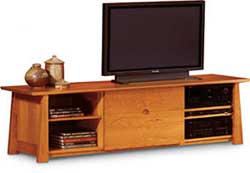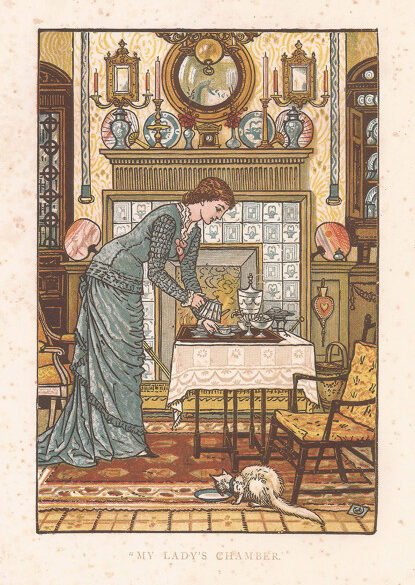With more than 391,000 children and youth in the foster care system across the U.S., being a foster parent is one of the most important roles you can step into.1
But it can be a difficult role, as well. Taking time to carefully prepare your home and family can help alleviate stress and make everyone feel more comfortable.
In this guide, we’ll go through, step-by-step, an effective way to set up your home for a foster child.
Getting Your Home Ready For a Foster Child
You want your home to look nice when you host a guest of any kind, but preparing your home for a foster child requires a different approach. Here are some helpful tips to get started.
Before you can take in a foster child, your home will typically be formally inspected by the foster agency to ensure it’s suitable for a child in their care, so you want to promote a clean and healthy home.
That said, you don’t have to go crazy scrubbing the baseboards and dusting every nook and cranny. Simple chores like wiping down surfaces, keeping your sink clear of dishes, throwing away trash and vacuuming should suffice.
Perhaps even more important than cleaning is decluttering. A home filled with unnecessary clutter can be overwhelming for anybody, but especially for a foster child adjusting to a new environment.
The process of decluttering can be overwhelming in itself, so take it one step at a time. Create a checklist for how to best declutter your home room by room. Take inventory of what you need, what you can donate and what items may be better suited in storage.
After you’ve decluttered and figured out what items need to stay, start thinking about the best way to organize these items. A disorganized home can be a major source of stress, especially for a new family member trying to get their bearings in a new environment.
Like decluttering, organizing is a task that’s best handled in small bites. Tackle one room at a time, and within that, one cabinet, drawer or shelf at a time. If you already have children at home, give them organization tasks — like keeping their toys in a chest or giving them a specified bathroom drawer for their toiletries.
The home study professional will need to confirm that your home complies with all state and local building, zoning and fire safety codes. Beyond that, there are extra steps to take to create a safe home for your foster child, especially if they’re younger.
If you’re already aware that something in your home needs to be fixed, now’s the time to do it. Here’s a short list of other safety features to consider:
- Make sure the kitchen is safe for children by keeping sharp utensils in locked drawers or hard-to-reach areas and having appropriate safety features for appliances.
- Consider electrical covers, corner protectors and cabinet and drawer safety locks (especially for hazardous items).
- Ensure that all smoke alarms and carbon monoxide detectors are working.
- Install railings, gates or grips on stairs.
- Confirm your home is free of lead paint.
- Assure window safety for kids with appropriate locks and no cracks. If you have double-hung windows, open them from the top, not the bottom.
- Consider installing home monitoring devices, such as a Ring camera.
By this point in your foster parent journey, you should have been notified whether or not your pet or pets are suitable for an incoming foster child. Once you’ve gotten the thumbs up, it’s time to get your pet’s belongings in order.
Try to keep all of your pet’s things confined to one room – or at least out of the way of the main areas. And don’t forget to let your foster child know about the pet and introduce them early on to make sure the child is comfortable living with animals.
If your foster child is not particularly pet-friendly, you want to take extra steps to keep your animals away from their bedroom and any other areas they may like to hang out in.
Providing All the Necessary Furnishings and Comforts
It can be hard to design a space for a child you haven’t met yet. But there are some universal things you can do to make sure your foster kid feels comfortable and as at home as possible.
You should try to give your foster child their own bedroom if possible. But if it’s a shared space, be sure to identify personal spaces. For example, provide designated shelves or drawers solely for their belongings.
Don’t go crazy trying to design a Pinterest-worthy room. Pick gender-neutral colors (think grays and tans) to give yourself more decorating options later on. Once you get to know what your child likes, you can bring in accessories to match their favorite color or interests. If this spare bedroom houses multiple foster children over the years, you’ll be glad you didn’t decorate it with specifics in mind.
If your foster child is sharing a room, they must have their own bed. Twin beds are a great option because they take up less space and can work for the widest age range.
If you know you’re going to be fostering a baby, consider a crib that converts into a toddler bed or a comfortable pack-and-play if space isn’t available.
The amount of storage a child will need typically depends on age. Younger kids may only need two or three drawers, while older ones typically need a full dresser or a closet. If you don’t have the space to accommodate more furniture, you can get creative with hanging racks, shelves or under-bed storage options.
Foster children will certainly appreciate private storage for their belongings. Again, you can utilize shelves, drawers or under-bed storage options in the bedroom. Or, give them a container in another room of the house to store hobby-related items.
Some foster children may bring their own toiletries, but that’s not always the case. It’s good to have some staple items stocked — toothbrushes, deodorant, shampoo, soap, diapers, etc. Stick to simple products that are allergen-free, but you should also ask about any potential allergies before offering anything.
Again, try to give your foster child a dedicated drawer or shelf for their toiletries. If the shared bathroom is too small, consider giving them a shower caddy or something similar for their personal items.
Lastly, consider what additional items can help make your foster child feel most comfortable in your home. The possibilities are endless, but here are a few ideas to get you started:
- Night lights
- Stuffed animals
- Decor that aligns with their interests
- Toys
- Sporting goods
- Books
- Art supplies
- Tech (video game console, tablet, TV, etc)
Preparing Other Members Of The Household For A New Foster Child
It’s important to properly explain the foster care process to your family members and children before the arrival of a foster child. Be sure to approach the subject carefully and explain the importance of why your family is stepping into this crucial role.
You should gather and share as much information as possible about your incoming foster child before their arrival. Do they interact well with other kids? How about adults? Are they social or shy? Knowing some characteristics beforehand can help avoid tension or awkwardness between your new family member and your existing ones.
Explain To Your Own Children Why You Are Bringing A Foster Child Home
Children are curious by nature, so be prepared to answer some questions. But also be careful not to divulge more information than what’s appropriate about the foster child’s background or situation.
According to Considering Adoption, these are four commonly asked questions from children about foster care:
- Why is the foster child living with us?
- What happens when a kid is too old for foster care?
- Where is foster care?
- How long do kids in foster care have to wait to live with their parents?
You should prepare yourself to answer these questions, among others, in an age-appropriate manner. You might want to connect with your foster agency or a social worker to make sure you’re readied for these conversations.
If your incoming foster child is of a different race, ethnicity or religious background, you may want to explain these differences to your children in a way that encourages understanding and acceptance. This will help to avoid any awkward confrontations and overall make the living experience more comfortable for everyone.
Reassuring Other Family Members That Everything Will Be Fine
You’ll want to reassure your children — especially younger ones — that the foster child is not meant to replace them in any way. Explain that they’ve done nothing wrong and instead talk up the important role your family is taking for another child in need.
Reinforce that this situation may not last forever. If you have an idea of how long a child may be staying with you, communicate that. The more you can do to prepare your children, the better.
Include Family Members In the Process
If possible, consider letting members of your household meet the foster child before they move into your home. This will help both parties familiarize themselves with what’s to come, and your children may have additional questions after meeting the child that will be helpful to answer before move-in day.
Setting Your Foster Child Up For Success
Preparing your home and your family members for an incoming foster child sets up a foundation for success. But it’s a foundation you’ll need to build upon.
According to The Family Initiative (TFI) — a nonprofit providing foster care services in the Midwest — there are five main ways you and family members can help your foster child succeed in your home.
- Build trust: Be honest and respectful from the start.
- Be patient: Give them time to get their bearings and don’t expect too much from them right off the bat.
- Let them know you are there for them. Offer support and encouragement right away so they feel comfortable sharing their feelings with you.
- Set ground rules and boundaries early on. If you have household rules, let your foster child know them as soon as they move in. This may include curfews, chores, allotted technology time and so on.
- Encourage them to talk about their past experiences and feelings. Some foster children have experienced truly traumatic life events, such as neglect and abuse. Listen carefully to what they have to say (even when it’s hard to hear) and let them know that their stories are safe with you.
It’s important to keep your expectations low and your patience high when it comes to a foster child’s behavior. You don’t know exactly what they’ve dealt with, and you can’t expect them to adapt to your family and your rules right away.
The best thing you can do to help your foster child thrive is to provide the most comfortable and safe household. Whether they’ll be with you for days, months, or years, the impact you and this child will have on each other can last a lifetime.












